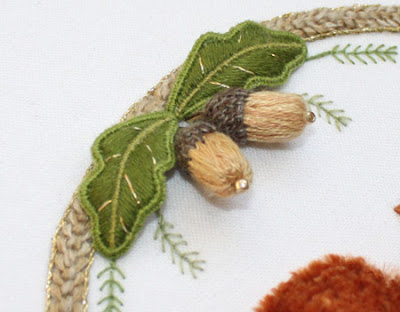Maybe you have heard of the Bead Journal Project or the Quilt Journal project, there is apparently also a crazy quilt journal project. For some time now, I have been a bit jealous of them and their projects. But not any longer. I'm officially starting the embroidery journal project. It's a bit informal to start with, as I don't know if it will just be me or others will be interested. And to start with, I'm running it from here. Perhaps if there are others who are serious about joining in, I will make formal lists of participants. I've made a page here on this blog for the 2012 embroidery journal project. Anyone is welcome to join in, even if you join in late.
So what is this about really? I believe there is something inside us that motivates us to choose certain themes and projects over others. We only have so much time after all. What is it that is trying to get out and what are we hoping to say?
I believe embroidery is an art form. We can use it to express ourselves, perhaps even learn to understand ourselves better. When you silence the inner critic and let the stitches flow, you let your right brain have its way, and amazing things can come out. Things you just can't put into words.
Everyone has a story, everyone has different experiences. Use your embroidery to tell those stories. Let others learn from you. Each of us has our own way of making stitches on a fabric, even the same exact stitch is different from person to person. Let those be part of your story.
There are really no technical requirements, just a willingness to try and share. The project can be anything, if you insist on following a pattern you of course, can, but it really is better to just pick up your fabric and make your own themes and motives. If you feel that is beyond you, then take a pattern you really like and make some effort to change or personalize it, so it's the way you want it to be.
The project can be any style, it can be very definite forms and shapes or it can be free and abstract. Neither is wrong. But do take the chance to go out of your comfort zone just a little, try some new technique or new stitches. There are many ways to tell your story, perhaps a new method will open new opportunities for you.
 |
| This was my first completely unplanned project. I started with letters. I knew I wanted a spring theme. Something to capture the exploding new life around me. |
Just one more thing to say: that is this is part of my effort to help make stitching more personal, because this is what it is about. It isn't about making perfect stitches and perfect designs. There is enough press in the world for us to all be "perfect". In addition, our personalities are getting lost in the mass manufactured culture out there. Use your crafting skills to be unique.






























